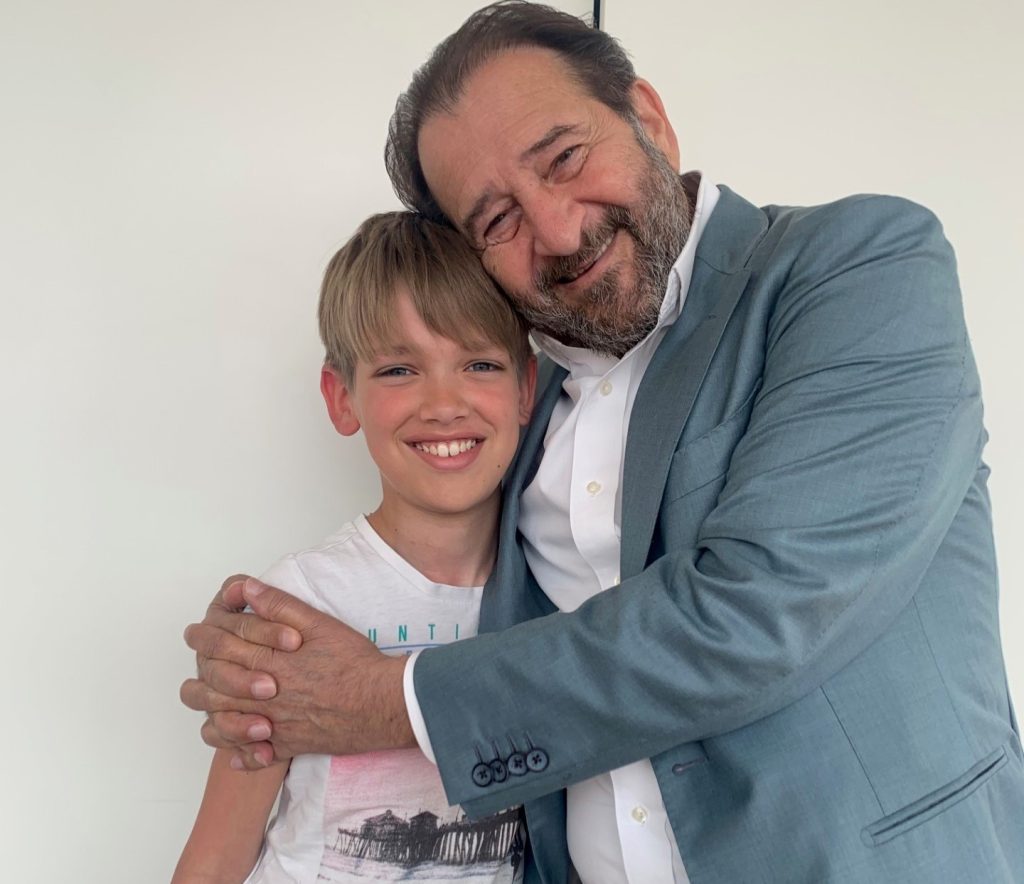Young boy meets surgeon who saved his life with ground-breaking procedure
12 January 2024 - A 12-year-old boy who underwent pioneering surgery while he was still in the womb has been reunited with the surgeon who gave him a chance of life.

In 2011, Thomas Hay was diagnosed with Congenital Diaphragmatic Hernia (CDH), a rare condition affecting babies before birth, during a routine pregnancy scan at 20 weeks. Lucy Hay, Thomas’ mother, explained: “It was absolutely devastating. We were told our baby had a hole in his diaphragm, allowing his abdominal organs to push through into the chest cavity and crush his lungs. At the time, we were told he had a 50% chance of survival.
“Still pretty numb from the news, we began researching the condition and came across a few articles about pioneering and experimental in-utero surgery for CDH. This incredibly precise surgery is performed while the baby is still in the womb at around 24 weeks and is only offered in the most extreme cases of CDH where the baby’s chance of survival (without the surgery) is very low. The one person in the UK who performed the complicated surgery at the time was Professor Kypros Nicolaides, Professor of Fetal Medicine at King’s College Hospital and a pioneer of fetal surgery.
“We soon had a referral to meet with Professor Nicholaides to discuss whether in-utero surgery might be an option for Thomas. It was at this appointment, when I was 24 weeks’ pregnant, that we were given the heart-breaking news that Thomas’ relative lung size had decreased significantly since his last scan and his chance of survival was now significantly below 2%. An hour later, after a lot of encouragement from my husband, I was on the operating table. We were fully aware that there were a number of risks involved, but we also knew that this was probably our baby’s only chance of survival.”
The complex procedure involved inserting a miniature latex balloon through the wall of Lucy’s uterus, down through Thomas’ mouth and positioning it delicately in his windpipe before inflating it. This aim was to trap fluid that would normally escape through his mouth, forcing Thomas’ lungs to expand and develop.
Lucy explained: “My husband and I watched on the monitor as Professor Nicholaides inserted a camera into my womb and we saw him carefully guide it through our baby’s mouth and down into his windpipe. The room was jam packed with students all wanting to watch the renowned Professor carry out this pioneering operation. An hour later I was on my way home! Over the next few months, Thomas’ lungs increased in size dramatically. After having the balloon removed via key hole surgery, Thomas was born at 37 weeks in August 2011.
“Thomas is now 12 years old and is in Year 8 at school. Apart from suffering from asthma and having to avoid contact sports such as rugby, he leads a completely normal life. He is a bright, active, sociable, chatty boy (with a slightly crazy personality) who is Star Wars and Lego obsessed.
“No words or actions would ever be sufficient or appropriate to express the immense feeling of gratitude we have for Professor Nicholaides. We have no doubt that he saved Thomas’ life. He is a truly remarkable man who has dedicated his life to medicine and saving lives of unborn babies. It was an absolute honour to go back and see Professor Nicholaides; Thomas was also very excited, and a little overwhelmed about meeting him in person. It really was a very special moment that we will always treasure.”
Thomas Hay added: “It was amazing to finally meet Professor Nicolaides. After hearing so much about him and what he did for me before I was born, I was very excited and grateful to be meeting him.”
Professor Kypros Nicolaides, Professor of Fetal Medicine at King’s College Hospital, said: “It was a great pleasure meeting Thomas. He’s doing brilliantly and it makes a big difference to me when I see such excellent results of our fetal interventions.”
